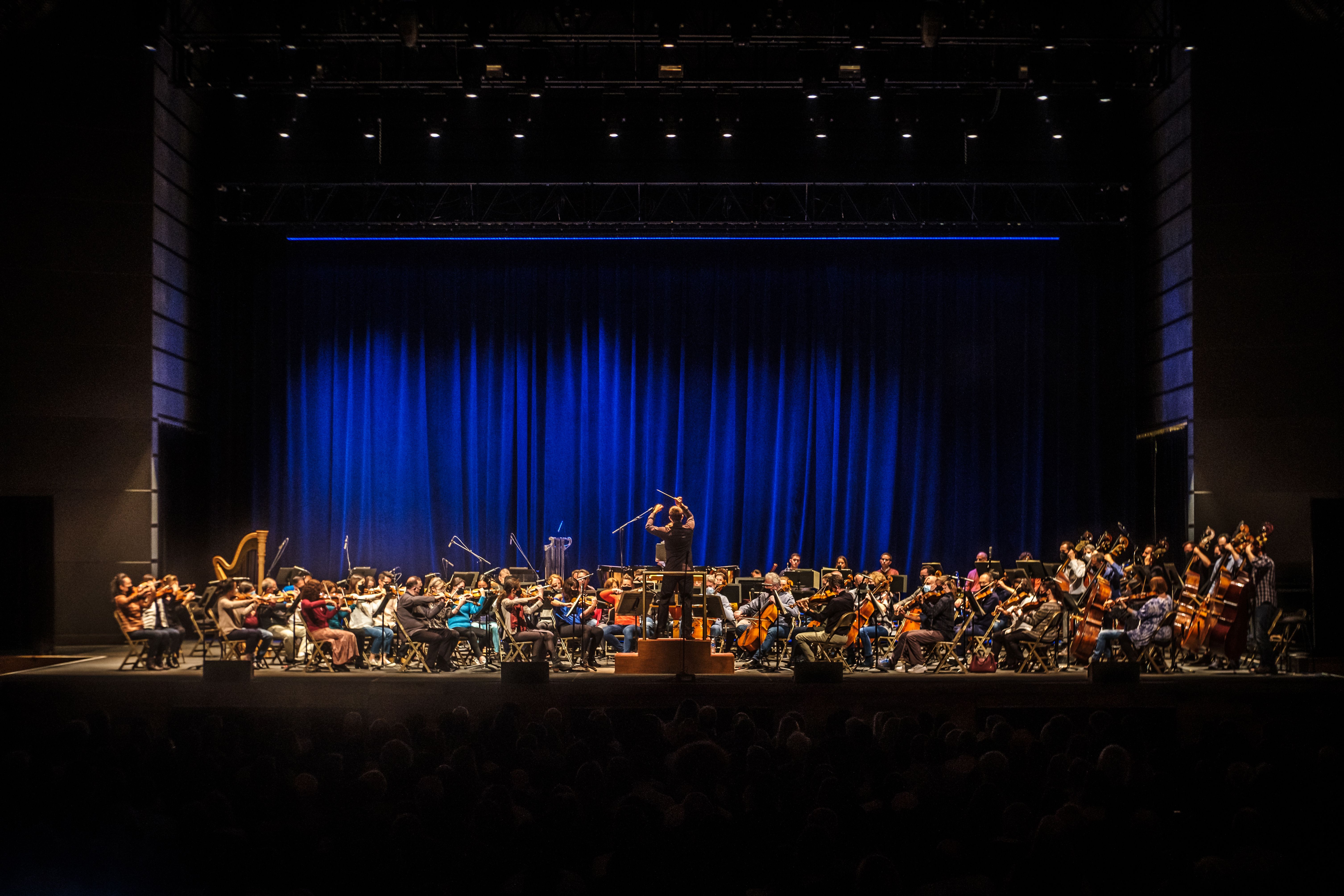The National Symphony Orchestra (NSO) kicked off its third concert series by making its triumphant return to the Anthem on October 24. Instead of playing at the Kennedy Center, the NSO’s typical concert venue, the series caters to younger audiences by performing at the more mainstream nightspot. NSO at the Anthem aims to provide high quality music at affordable prices, specifically targeting those with limited exposure to orchestral music, and did not disappoint.
The first concert of this year’s series featured three distinct performances with a programme that spanned different genres and diverse histories. Gypsy-jazz group Hot Club of Baltimore opened with a short set and was joined by vocalist Alexis Tantau for the evening. The group covered various 20th century songs, ranging from “La Vie en Rose” to music from the soundtrack of the 1964 film My Fair Lady. Their rendition of “La Foule,” a Spanish-influenced song popularized by legendary French singer Édith Piaf in the 1950s, was especially astounding. Supported by the Hot Club’s string-filled melodic sound, the performance was heightened by Tantau’s ability to soulfully croon with a warmth that kept concert-goers hanging on her every breath.
To capture the attention of a younger audience, the NSO opened with The Block, a modern piece from Kennedy Center Composer-in-Residence Carlos Simon. As explained by Simon, this 2018 composition represents the diversity of life that exists on a single block in Harlem, particularly within the context of the city’s deep-seeded roots in African-American culture and music. The NSO’s detail-oriented interpretation does justice to this nuanced history, which Simon cleverly conveys through alternating patterns of whimsical pecking from woodwind instruments and the rich fanfare of the brass instruments. This juxtaposition and The Block’s usage of percussive jazz creates a kaleidoscopic effect keenly reminiscent of the Harlem music scene. It also serves as a reminder of the depth such stories can hold despite being historically overlooked by racial power structures. Alternating time signatures and invoking textured patterns, the glittering undertone of this composition effectively introduced an orchestra’s powerful ability to tell stories to a newer audience.
The NSO further showcased its storytelling abilities through a passionate performance of Tchaikovksy’s Symphony No. 5, a 19th century composition and classic in the orchestral canon. Although Tchaikovsky’s work always speaks for itself, the performance benefited greatly under the direction of guest conductor Nicholas Hersh, who also serves as Associate Conductor of the Baltimore Symphony Orchestra (BSO). Hersh has a passion for expanding the reach of classical music; he created BSO Pulse, in which he brought together indie bands and orchestral musicians in avant-garde collaborations.
Before the piece, Hersh introduced the symphony to an audience composed of many first-time orchestral concert-goers. He spoke of Tchaikovsky’s six symphonies as a snapshot of the widely-celebrated Russian composer’s thoughts during a specific point in his life, urging his audience to view Tchaikovksy’s symphony and classical music with an understanding of the stories it tries to tell. In doing so, Hersh successfully reintroduced a classical masterpiece through an accessible lens which resonates with modern audiences.
As such, the NSO’s gut-wrenching and immaculately detailed performance of this masterpiece creates a pensive ambience in which Hersh’s familiarity in bringing orchestral music to younger audiences prevails. In reframing the work through a modern lens, the thought-provoking undertones of Tchaikovsky’s work stood in an unexpected parallel to the equally provocative modern composition that preceded it, bringing together the old and the new.
In keeping with the theme of accessibility, NSO members were dressed equally as casually as audience members. The Anthem’s modern-yet-grand aesthetic added to this sentiment; instead of traditional velvet curtains, projected virtual stage curtains framed the stage. The event’s simplicity invoked an approachability that welcomed first-time symphony-goers to the classical orchestra. Still, the informality did not prevent the audience from experiencing a high quality performance.
NSO at the Anthem is part of a growing pattern of events pursued by symphonies around the world which intend to bridge the historical gap between classical music and modern audiences around the world. If this first concert is a reflection of what is to come, this series will not disappoint.
This series will include a seasonal Ugly Sweater-themed concert featuring guest conductor Emil de Cou on December 8, and conclude with a spring concert conducted by Rocderick Cox on April 8 that will feature Esa-Pekka Salonen’s Helix and Sergei Prokofiev’s Symphony No. 5.





